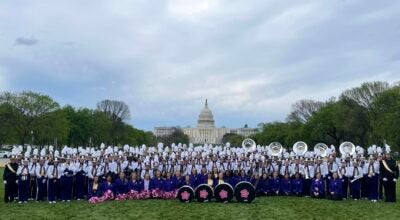Vaccine during break means immunity when classes resume
Published 7:41 pm Friday, December 18, 2009
With H1N1 vaccine availability increasing, the number of flu cases declining and holiday breaks from school and work occurring, the timing is right to get immunized, said Southwest Health District Health Director Jacqueline Grant.
And new data from the Centers for Disease Control and Prevention reveals that children and young adults have been hit far harder by H1N1 than was previously thought.
“By mid-November, many more children and young adults had been hospitalized or killed by H1N1 influenza than we see in a routine flu season,” Grant said. “The CDC reported Dec. 10 that around 10,000 deaths have been attributed to H1N1, including 1,100 child fatalities and 7,500 young adult deaths. During a regular flu season, we expect to see influenza claim the lives of 40 to 50 children.”
In many of the district’s 14 counties, schools are sending students home with flyers or letters about getting H1N1 vaccinations over the holiday break.
“Surveys are also going to parents to determine how much interest there is in school-based vaccinations,” said Grant.
Roughly 50 million people—or one out of every six Americans—have been infected with H1N1, according to the CDC. Around 200,000 hospitalizations have been attributed to the novel virus.
Even though so many people have had H1N1, and even though many have received H1N1 vaccine, the majority of the population remains susceptible to the disease, the CDC warned.
And while the current wave of H1N1 is receding, having a large percentage of people without protection from the disease raises the prospect that another wave could occur, said the CDC.
“That’s why vaccination remains important and why we are encouraging the public to take advantage of this opportunity,” Grant said. “It takes about two weeks after immunization for the body to develop full protection. Getting vaccinated now will give the vaccine time to kick in by the first of the year, when it is back to business as usual.”
Seasonal flu typically peaks in January or February, she said.
“Bear in mind that we are still seeing much higher flu activity for this time of year than normal,” said Grant. “Our concern is that holiday gatherings can provide the H1N1 virus with the chance to spread.”
Those most at risk of complications from H1N1 include:
Anyone from six months to 24 years old
Pregnant women
Anyone aged 25 to 64 with underlying medical conditions that put them at risk for flu-related complications
Health care and emergency medical personnel
People who live with or care for infants younger than six months
“These groups are bearing the brunt of the disease, so it is especially important for them to get protected,” Grant said. “We now have a supply of vaccine available that can prevent H1N1 infections,” she said. “Restrictions on the vaccine have been lifted so that everyone who wants it can get it. The vaccine has the same solid safety record as seasonal flu vaccine. And the more people who get vaccinated, the fewer cases of H1N1 we’ll have in the future.”





